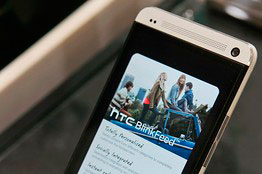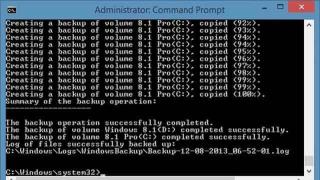I think many owners HTC Desire were in a situation where the device starts to complain about the lack free space in ROM, refusing, for example, to synchronize mail. This is aggravated by the fact that all programs that support transferring to SD have already been transferred, and it seems like there are 2 ways left: remove some applications or change the phone.
I consider both options unacceptable, because only really demanded software is installed (like Navitel and 2GIS). In addition, Desire is not at all outdated, and performs its functions perfectly.
As a result of an Internet search, a way was found to make sure that “both the wolves are fed and the sheep are safe” - not to lose installed programs, and get about 50MB of free space.
The post does not claim to be technically new, and many of the utilities used have already been mentioned, incl. on Habr. I decided to put together piecewise information and set out in the form of instructions - what needs to be done, and what happens with it. I successfully completed all these steps on my Desire.
Traditional warning:
1) Everything below is for informational purposes only. If you want to repeat - then only at your own peril and risk, very carefully and without haste!
3) As a result of these actions, the device loses its warranty!
So, the initial data is HTC Desire PCT c official. Android 2.2 (firmware version 2.29.405.5), NOT rooted, not branded. Those. something that is in the hands of many users.
If you have a locked device, or bought abroad, google on keyword"goldcard", because there are a number of features that I will not dwell on.
The essence of manipulation is as follows:
1. get root rights
2. make S-OFF bootloader
3. make an additional partition on the flash drive to install the software there
4. install the Link2SD utility from the market and transfer programs from ROM to the previously created partition
During all these actions, with care and accuracy, the data in the phone and on the memory card will be safe and sound. But it's better to make a backup ;-)
Let's get started!
1. Getting root rights
Way getting root has been known for a long time, and I will not repeat it here.
2. Do S-OFF
What is S-OFF in general? HTC devices have a security called secuflag. Thanks to it, the /system and /recovery partitions are mounted in read-only mode. Therefore, even if we have root rights, we cannot change their contents.
A group of people calling themselves Alpharev managed to disable this protection, ie. do S-OFF. The /system and /recovery partitions mentioned will be mounted read/write, this will be used later in step 4.
As a bonus, you get the ability to change system files directly from your phone, change the boot picture, etc., delete unnecessary programs from firmware.
Before starting the procedure for obtaining S-OFF:
1. fully charge the device
2. check that your Desire has HBOOT version 0.93.0001 (this version is installed with official firmware 2.2)
3. get root-rights (see point 1)
Even today it was:
Comments:
werty: Here is the news, so the news, on w3bsit3-dns.com this instruction has been lying for a year
connoisseurs blah
Alexander: Well, not everyone reads 4pda
vlodimer: for myself, I solved this problem right away - cyanogen + c2m
coroud: but not easier, if already with root, install a2sd script, and transfer both programs and davilik cache through the terminal in three commands?
Oleg: Tried Cyanogen, Oxygen and RuHD. Didn't roll. When using the device, it constantly hung tightly, rolled back to the official 2.2
Mr Anderson: There is an even more radical option - AOSP-firmware (see CM7)
Even without an ext-partition with the same software as on the drain, 65 meters are free, while literally 5 programs are transferred to sd, instead of a total sweep.
And this is without changing the partition table, with which you can squeeze the minimum 50 MB from the system.
Today we will talk about such an issue as deleting applications on the communicator. More specifically, about system applications HTC Desire and their removal on the communicator.Communicator HTC Desire won a well-deserved popularity among Android fans. But most users have a question about how to get rid of system applications that are not needed and never used.For this purpose, we need activated root rights on Desire and the adb package installed on the computer.First, we activate the ability to write to the system area. For this purpose, connect the communicator to the computer via USB. On the computer, launch the command line (Click Start - Run - CMD).IN command line write: adb reboot recovery. The communicator goes into recovery mode.Recruiting in command line adb shell. The first character on the command line is changed to a "#" sign.Next, type the command mount -o rw -t yaffs2 /dev/block/mtdblock3 /systemThe entire system area allows you to write and read information from it.Before removing system HTC apps Desire, I advise you to make a backup.To do this, we type the exit command. Then we type adb command shell ls system/data. You will be shown a list of available system applications (files with APK extension). Select the apps you want to save and type the following commandadb pull system/app/ where in this case — full name system file from the list provided to you earlier. The system file will be copied to the folder that was originally opened on the command line (for example, C:UsersSample)Now let's move on to the most important part of our operation, the removal. I want to note that it is not recommended to remove all system applications. It is not recommended to delete such a system application as Rosie, it is necessary for HTC Sense. Apps such as Quick Office, Teeter, Facebook and Peep can be removed painlessly.So, in order to remove HTC Desire system applications, you need to:- enter shell mode, for this we type the adb shell command- we type the command cd system / app (go to the folder containing system applications)- type ls (display a list of applications)-select the application we want to remove and type the command rm , where in this case is the full name of the application from the list. Upon completion of the command specified application will be removed from the communicator. If there are files with the same name and extension ODEX, delete them with the rm command.After completion of all removal operations and further normal operation communicator, you need to reboot it.To restore system applications, you need to perform several simple operations. Activate the ability to write to the system area (as described at the beginning). Find what you need system file(saved by you on your computer in advance) and type the command:adb push , system/app/, where in this case is the full name of the file that we install on the communicator.
With the help of this manual, you can not only delete HTC Desire system applications, but also restore them on your device.
First of all, pay attention to impressive design and the most modern flagship hardware stuffing. But no less number of pleasant surprises awaits users when they get acquainted with updated version. In particular, you should pay attention to the functionality of BlinkFeed (“Blinkfeed”) - a universal aggregator of news, updates from social networks, weather information, etc. The function, no doubt, is convenient, but not all users need it.
There is a built-in function to turn off BlinkFeed. The disable method described in this article works in Sense 5.0.
Since BlinkFeed is built into the shell without any alternatives, the output for many fans is more classic look The user interface comes down to reassigning the default desktop. Here's how it's done.
- From home screen BlinkFeed swipe left: a desktop will open, almost identical to that in the standard user interface Android.
- Now, either press and hold on a free part of the screen until the settings menu appears, where you can edit the functions of the desktops, or pinch (pinch your fingers together) to access the same menu.
- At the top of the screen is a miniature view of all the desktops active on the device, and the BlinkFeed panel is on the left. This is where you can select the screen that will serve as the main desktop. To do this, hold your finger on the desktop icon, after which the options "Set as main screen” on the left and “Delete” on the right. Next, you need to drag the desired panel in place of BlinkFeed and click "Set as Home Screen".
- After that, a small icon will appear on the selected panel, indicating that the change to the default desktop was successful, and BlinkFeed will remain running on one of the backup desktops.
Next, go to Settings > Apps > All Apps, where find and first stop (Force Stop), and then disable the following services: HTC News Plugin, Location Picker, Local Feed Provider, Social Feed Provider. If your phone has infrared port, turn off the TV program. After the changes have been made, restart your smartphone.

The method is suitable not only for One, but also for other company smartphones with BlinkFeed: Desire 500, 600, Butterfly S, One mini.
It is important to note that on standard firmware remove completely news feed from the Sense interface is impossible (a black block will remain in its place), but when disabled, it will not consume energy and traffic.

Sometimes users have a question about how to remove tips and help from BlinkFeed. This is done as follows: “Settings”> “Applications”> “Tips and Help”: you need to clear the application data, and then set the “Manual” option in the update settings. Another option is to uncheck Settings > About phone > Help > Show tips on the screen.
You can hide Tips & Help by swiping down from the top of the app's home screen, tapping the three dots that appear at the top, and selecting Hide App.



